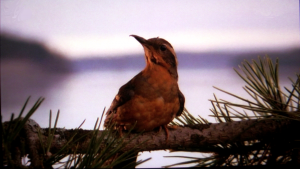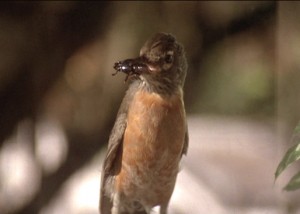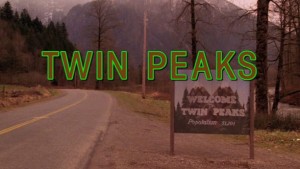Twin Peaks is exactly what you would except from eccentric director David Lynch. Co-created with Mark Frost, the television series aired for two seasons between April 1990 and 1991, enjoying initial success and going on to gain a huge cult following after its initial broadcast. Much like Lynch’s other work, Twin Peaks explores the façade of small town America, revealing the darkness of its inhabitants that isn’t initially obvious.
The series is hard to place into an established genre- although it has features of crime drama, supernatural and psychological thriller it also has features of the melodramatic soap opera. As a result, the series has the ability to appeal to a wide demographic and has continued to reach audiences around the world long after its initial release. Although the genre of Twin Peaks is difficult to establish, it can be easily said that the series has a serial format rather than an episodic. The multiplicity of characters, multiple storylines and complex history are some of the elements that define Twin Peaks as a serial.
The opening sequence of Twin Peaks in the pilot episode was a rather lengthy two and a half minutes. For the rest of the series episodes it was cut down to a shorter one and a half minutes, though it remains ultimate in capturing the feel of Twin Peaks. The combination of small town imagery, slightly eerie music and bright green credits tie together to perfectly encapsulate the genius weirdness that is Twin Peaks.
The title sequence opens with a close shot of a Bewick’s Wren bird (native to North America) perched on a branch. Pointed out by writer Shaun Mir on the website Art of the Title, one of the last shots of David Lynch’s 1986 film, Blue Velvet, was also of a bird- though a robin perched on a windowsill. This could potentially be Lynch’s way of letting the audience know to expect a television series with themes and aesthetics similar to that of Blue Velvet (which is later proven to be the case.) The sequence then goes on to a series of cross dissolves depicting the lumber mill, allowing the audience to understand that the towns industry revolves around lumber before continuing onto the episode.
Following these first few shots, the fictional Pacific Northwestern town of Twin Peaks is officially introduced to the audience with an establishing shot showing the towns welcome sign (reading ‘Twin Peaks Population 51, 201’) in the foreground and the evergreen trees in the background. In a 1990 New York appearance, Mark Frost revealed that the original population of the town was 5, 120 but ABC Network felt that a town that small would be unrelatable requesting the population to be higher. As the series progresses a population of 51, 201 seems a little unrealistic as everyone in the town seems to know each other, there is only one high school and a handful of police officers to cater for a population of that size. Regardless, this establishing shot gives the audience the sensation that they are travelling down the road, entering the world of Twin Peaks.
After officially entering Twin Peaks, the audience is introduced to a waterfall in front of The Great Northern Hotel, which later becomes one of the recurring settings in the series. The fast moving water soon cross dissolves to follow a slow running stream and then ducks wading at the shore. The dramatic change of water movement in the sequential shots reflects the dramatic differences within the town of Twin Peaks. Sometimes slow and calm, there is a fast moving, heavy underground.
Throughout the entirety of the opening sequence, there are two other elements that shape it: the audio and the text. The choices made in regards to typography are aesthetically completely different to the natural landscape imagery on the screen- the text is made up of block orange capital letters, with a neon green outline. This is the only hint towards any sort of supernatural themes, something that becomes integral in the narrative of the series. The only audio throughout the sequence is a song called ‘Falling’, composed by Angelo Badalamenti. The song is slow, with a nostalgic undertone and combined with the images of the industrial and natural sides of the town succeed in capturing the creepy, nostalgic feel of Twin Peaks.
REFERENCES:
http://twinpeaks.wikia.com/wiki/Pilot
http://www.artofthetitle.com/title/twin-peaks/
http://www.esquire.com/entertainment/tv/a23468/twin-peaks-alt-culture/


